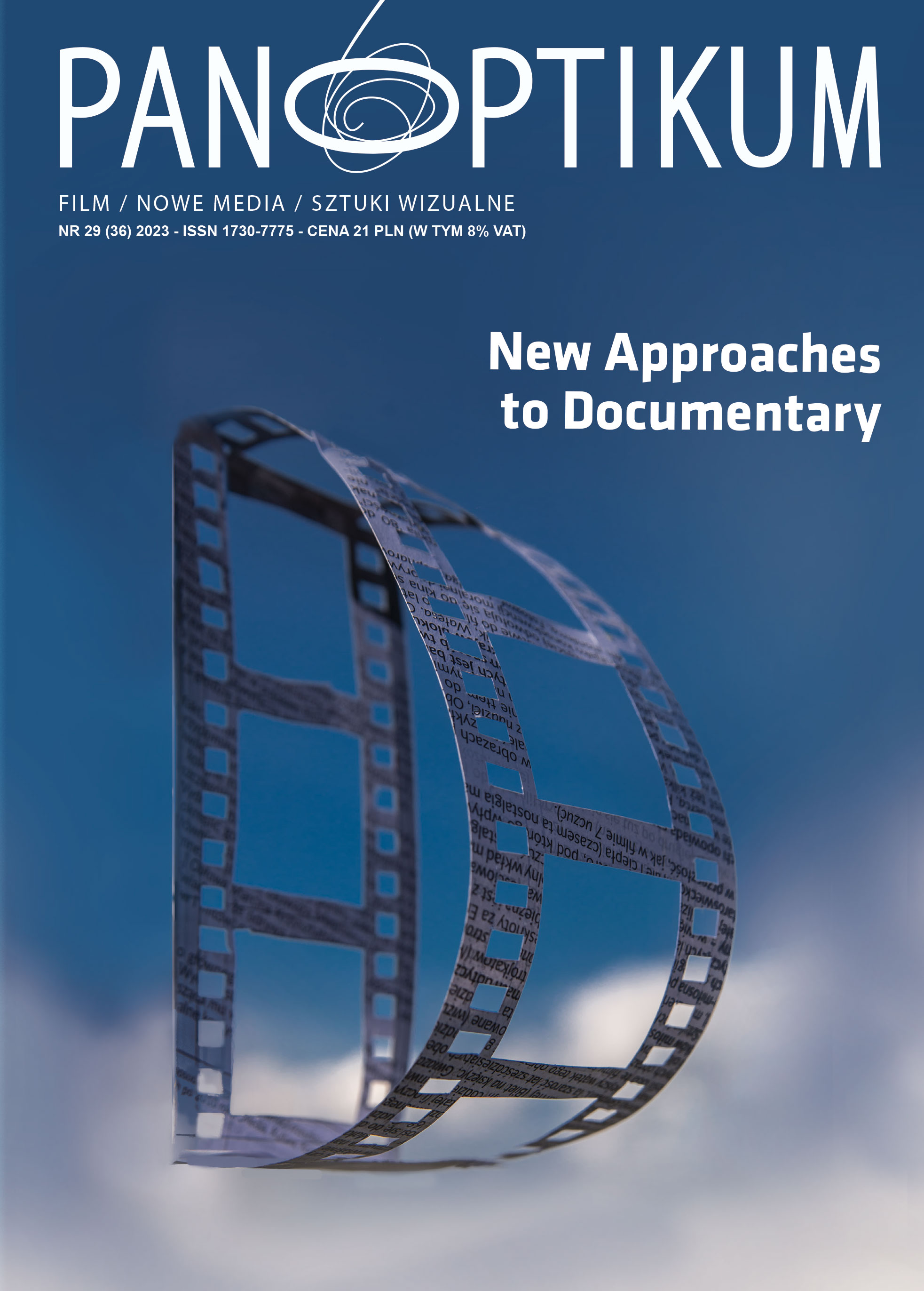New Paths for Exploring ‘History from Below’: Microhistorical Documentaries
DOI:
https://doi.org/10.26881/pan.2023.29.03Keywords:
microhistory, documentary, history and film, autobiography, home moviesAbstract
This article proposes a specific category of documentaries that adopt a unique approach to explore the past, and which are referred to here as “microhistorical documentaries.” These films fall within the basic parameters of written microhistory, a historiographical trend that emerged in the 1970s under the broader umbrella of “history from below.” Those parameters include a reduced scale of observation, a central role given to human agency, a conjectural approach to archival research, and a reliance on narrative structures. But microhistorical documentaries also exhibit specific traits of their own, such as underscoring the affective dimension, using autobiographical and essayistic perspectives, drawing on the protagonists’ personal memories to reconstruct the past, and using family archives (mainly snapshots and home movies). Films of this kind therefore differ markedly from the informational/expository model of the conventional historical documentary, sharing features with a certain type of contemporary documentary, with some traits that can be linked to a postmodern sensibility.
Downloads
References
Aguirre, C. A. (2009). Microhistoria italiana: modo de empleo. Caracas: Fundación Centro Nacional de Historia.
Brewer, J. (2010). Microhistory and the Histories of Everyday Life. Cultural and Social History 7, no. 1: 87-109.
Cuevas, Efrén. (2013). Home Movies as Personal Archives in Autobiographical Documentaries. Studies in Documentary Film, vol. 7, no. 1: 17–29.
Cuevas, Efrén. (2022). Filming History from Below: Microhistorical Documentaries. New York, Columbia University Press.
Davis, N. Z. (1984). The Return of Martin Guerre. Cambridge: Harvard University Press.
Del Rincón, M., M. Torregrosa and E. Cuevas. (2018). The Representation of Personal Memory in Alan Berliner’s “First Cousin Once Removed. Studies in Documentary Film 12, no. 1: 16-27.
Deleuze, G. (1989). Cinema 2: The Time-Image. Minneapolis: University of Minnesota Press.
Frisch, M. (1990). A Shared Authority: Essays on the Craft and Meaning of Oral and Public History. New York: Suny State University of New York Press. Ginzburg, C. y C.
Poni. (1991). The Name and the Game: Unequal Exchange and the Historiographic Marketplace. In E. Muir and G. Ruggiero, ed. Microhistory and the Lost Peoples of Europe, 1-10. Baltimore: Johns Hopkins University Press.
Ginzburg, C. (2014). Historia y microhistoria. Carlo Ginzburg entrevistado por Mauro Boarelli. Pasajes: Revista de pensamiento contemporáneo, no. 44: 89-101.
Ginzburg, C. (1980). Morelli, Freud, and Sherlock Holmes: Clues and Scientific Method. History Workshop Journal 9, no. 1: 5–36.
Ginzburg, C. (1993). Microhistory: Two or Three Things That I Know about It. Critical Inquiry. 20, no. 1: 10-34.
Ginzburg, C. (2012). Proofs and Possibilities: Postscript to Natalie Zemon Davis, The Return of Martin Guerre. In: idem: Threads and Traces: True False Fictive, Berkeley: University of California Press, 54-71.
Ginzburg, C. (1992). Just One Witness. In S. Frietlander, ed. Probing the Limits of Representation: Nazism and the ‘Final Solution’, 82-96. Cambridge: Harvard University Press.
Goursat, J. (2016). Mises en “ je”. Autobiographie et film documentaire. Aix-en-Provence: Presses universitaires de Provence.
Hirsch, M. (2012). The Generation of Postmemory: Writing and Visual Culture after the Holocaust. New York: Columbia University Press.
Lane, J. (2002). The Autobiographical Documentary in America. Madison, The University of Wisconsin Press.
Levi, G. (1991). On Microhistory. In P. Burke, ed. New Perspectives on Historical Writing, 93-113. Cambridge: Polity Press.
Lüdtke, A. (1995). History of Everyday Life: Reconstructing Historical Experiences and Ways of Life, Ewing, NJ: Princeton University Press.
Magnússon, S. G. e I. Szíjártó. (2013). What is microhistory? Theory and practice. London: Routledge.
Nichols, B. (1991). Representing Reality: Issues and Concepts in Documentary. Bloomington and Indianapolis: Indiana University Press.
Popkin, J. D. (2005). History, Historians, and Autobiography. Chicago: University of Chicago Press.
Revel, J., ed. (1996). Jeux d’echelles. La micro-analyse à la expérience. Paris: Seuil/ Gallimard.
Rosenstone, R. (1996). The Future of the Past: Film and the Beginnings of Postmodern History. In V. Sobchack, ed. The Persistence of History: Cinema, Television, and the Modern Event, 201-18. London: Routledge.
Serna, J. y A. Pons. (2019). Microhistoria: las narraciones de Carlo Ginzburg, Granada: Comares.
Sipe, D. (1991). The Future of Oral History and Moving Images. The Oral History Review 19, no. 1-2: 75-87.

 Academic Scientific Journals
Academic Scientific Journals









